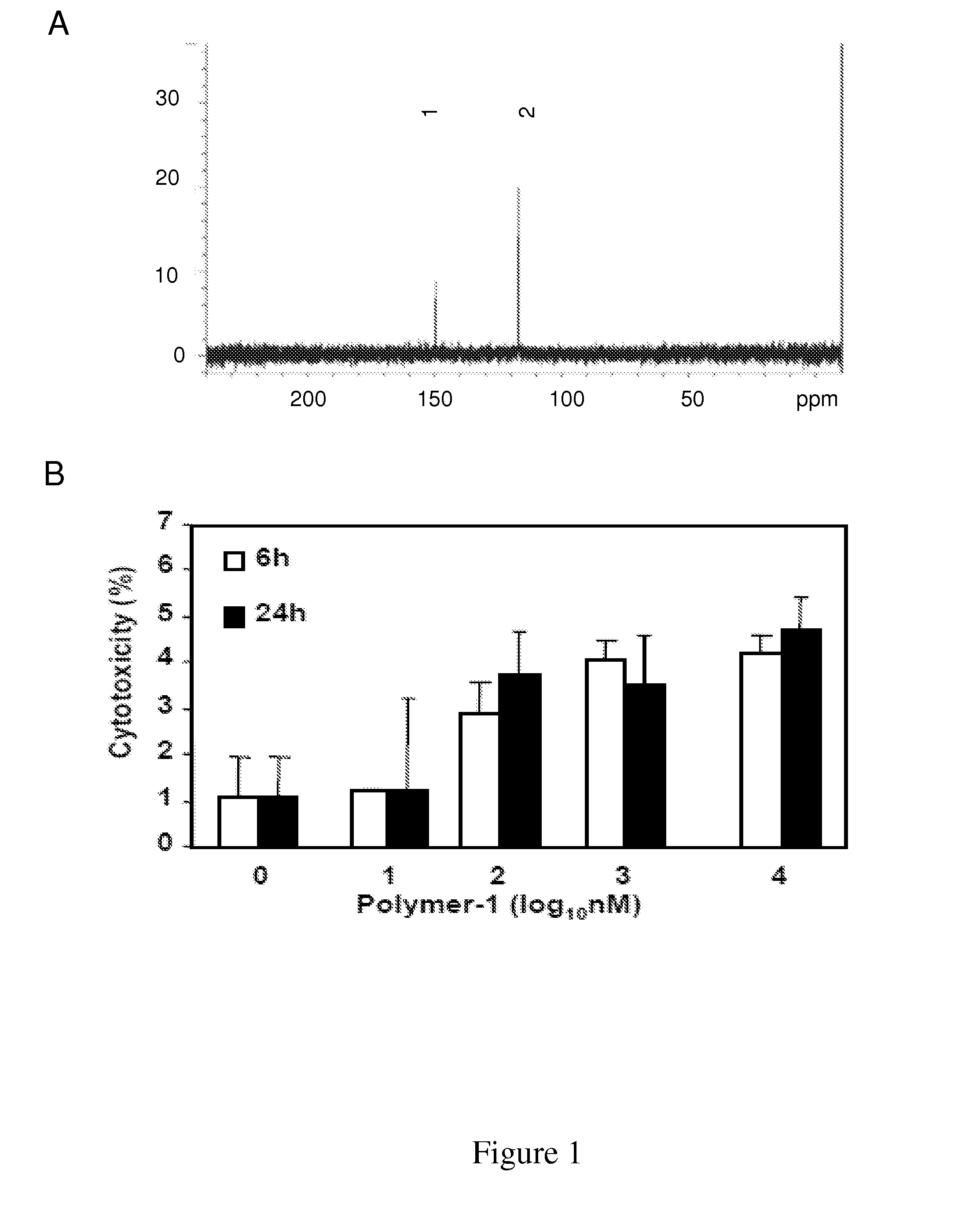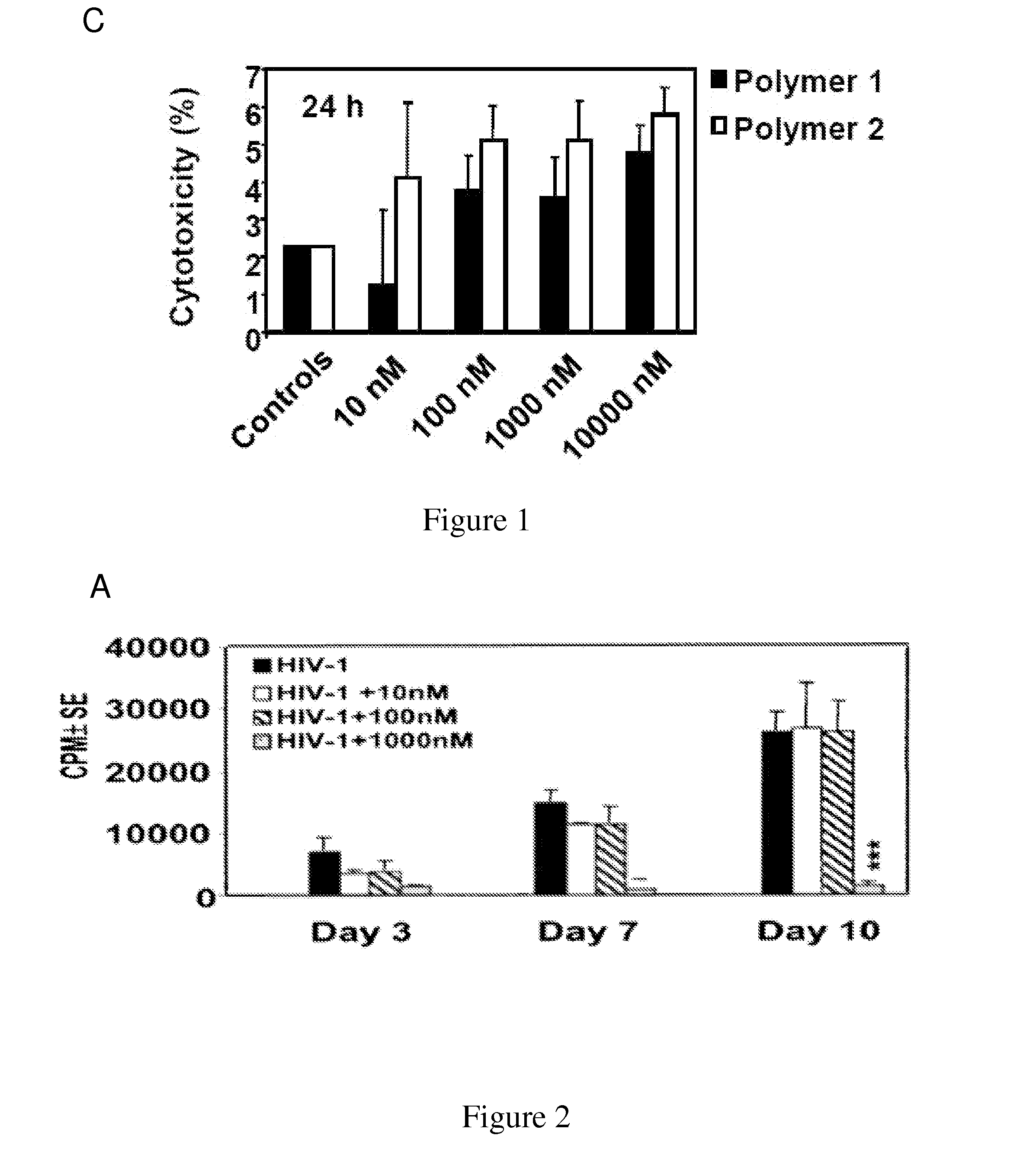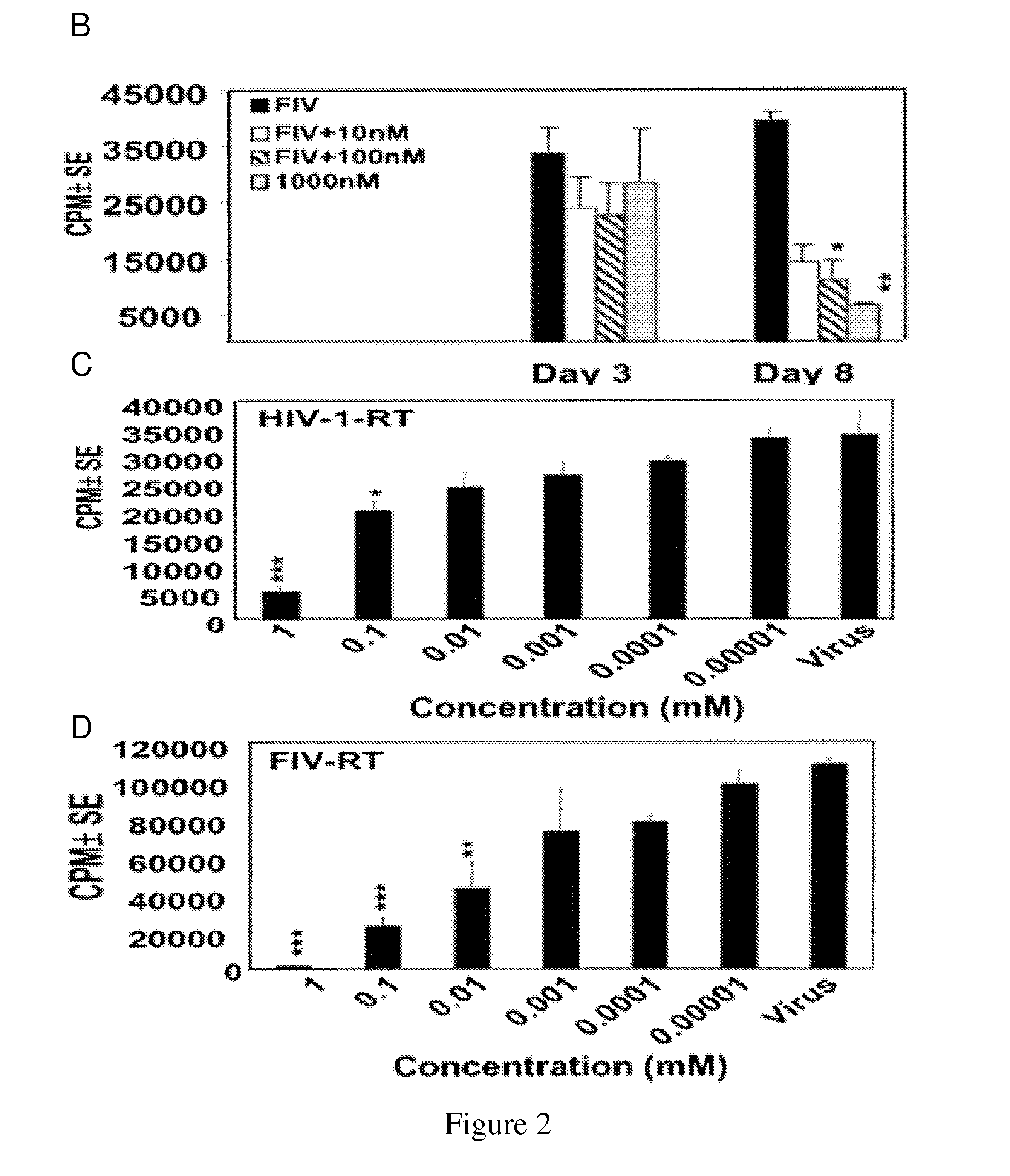Novel self-assembling polyphenol-quinonoid polymer derivatives and uses thereof
a polyphenol-quinone derivative and self-assembling technology, applied in the field of polyphenol-quinone derivatives, can solve the problems of microbial attack resistance in textile materials and clothing, major limitation of patients treated with reverse transcriptase inhibitors, etc., to suppress hiv-1 and fiv replication and infectivity, suppress viral reverse transcriptase levels, and reduce the effect of viral reverse transcriptas
- Summary
- Abstract
- Description
- Claims
- Application Information
AI Technical Summary
Benefits of technology
Problems solved by technology
Method used
Image
Examples
example 1
Synthesis and Characterization of Polyphenol-Quinonoid Polymer Derivatives According to the Invention
[0117]Polyphenol-quinonoid polymer derivatives according to the invention are formed through a novel autocatalytic free radical reaction according to the invention and as described below.
[0118]Reagent preparation, weighing of starting materials and the synthesis reaction must be carried out in the dark at room temperature without the use of additional oxidation agents (open air oxidation is sufficient). Starting materials are to be kept separate until ready for use. Deviation in any one of these experimental parameters will lead to uncontrolled complex free-radical degradation, condensation, ring opening and fragmentation reactions.
[0119]The pH of the nanopure water is first adjusted to pH 12 by addition of NaOH pellets, while stirring. It is important that no oxidation, reducing or buffering agents or compounds be added at this or any other point in the procedure. Recrystallized hyd...
example 2
In Silico Modelization
[0139]Molecular modeling prediction of these compounds interacting at an HIV-1 RT active site is conducted. Molecular modeling studies show that the polyphenol-quinonoid polymers according to the invention may bind to several critical components of the HIV-1 RT enzyme. Semi-empirical geometrical optimization PM3 level calculation for a representative structure of a polyphenol-quinonoid polymer according to the invention having molecular weight of 434 g / mol (n=2) allows to show an electrostatic potential mapping on the electron density surface with high electron density (‘hot’) and low electron density regions (‘cold’). These alternate regions of hot and cold electron density are typical for self-associating, self-assembling molecules and allow for complementary interactions to occur (‘hot’ regions with ‘cold’ regions to form dimers for example). After 0.5 hr of iterations under a Sybyl force field, the modeling results show binding interaction conformational ch...
example 3
Effect of Polyphenol-Quinonoid Polymer Derivatives According to the Invention on Reverse Transcriptase Activity
[0142]In order to assess the anti-viral activity of a polyphenol-quinonoid mixture according to the invention, the following assay was carried out to study its effect on RT activity.
[0143]For assessment of viral infection, Peripheral Blood Mononuclear Cells (PBMCs) from healthy humans (as described in Jones et al., 2005, above) and cats were initially stimulated with Con-A and subsequently infected after 3 days with the lentivirus together with introduction of IL-2 in tissue culture supernatants, which were harvested at different intervals as described earlier (Zhang et al., 2003, above).
[0144]Reverse transcriptase activity in culture supernatants was measured as described previously (Johnston et al., 2000, J. Virol., 74, 7211-20). Briefly, 10 μl of supernatant was cleared of cellular debris by centrifugation and incubated with 40 μl of reaction cocktail containing [32P]dTT...
PUM
| Property | Measurement | Unit |
|---|---|---|
| molar ratio | aaaaa | aaaaa |
| molar ratio | aaaaa | aaaaa |
| of time | aaaaa | aaaaa |
Abstract
Description
Claims
Application Information
 Login to View More
Login to View More - R&D
- Intellectual Property
- Life Sciences
- Materials
- Tech Scout
- Unparalleled Data Quality
- Higher Quality Content
- 60% Fewer Hallucinations
Browse by: Latest US Patents, China's latest patents, Technical Efficacy Thesaurus, Application Domain, Technology Topic, Popular Technical Reports.
© 2025 PatSnap. All rights reserved.Legal|Privacy policy|Modern Slavery Act Transparency Statement|Sitemap|About US| Contact US: help@patsnap.com



